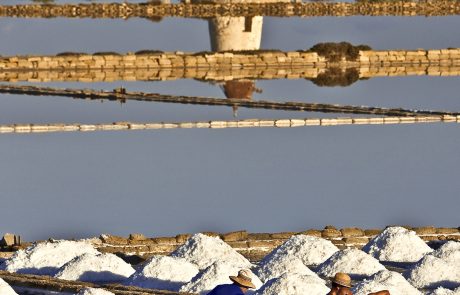Trapani and Paceco salt pans
Dettaglio
Western Sicily offers one of the most beautiful landscapes in the world. We are talking about the famous Salt Pans of Trapani and Paceco. Their extension reaches the coast of Marsala, with its Salt Pans and the island of Mozia.
The salt pans of Trapani are part of the Riserva Naturale orientata delle Saline di Trapani e Paceco managed by the WWF. The area is one of the most important coastal wetlands, offering peace and shelter to many migratory birds.
The history of the salt pans has its roots in the time of Frederick II. At that time, salt was fundamental to preserving food. The king understood the economic and commercial potential of the area and imposed a state monopoly on salt production. After the Normans, the Aragonese privatised the salt pans. The economy increased, and Trapani became the most important European centre for salt production.
When visiting the salt pans, one is caught up in an “ exotic” atmosphere. It is understandable to feel a little bewildered. We have not been teleported to the Netherlands, but we are admiring one of the most unusual sides of this beautiful, varied island.
The old star (or Dutch) mills are among the ten most beautiful in Europe, with their six wooden blades. The other type of mill you can find in this area is the American mill, with blades made of zinc plate. That is an extraordinary example of the redevelopment of old industrial architecture. Hundreds of curious travellers arrive to visit every year, insatiable for beauty and uniqueness. Windmills pump water between the basins and are used to grind salt. A series of basins of different sizes and depths create the salt pans. In summer, thanks to a system of levels, channels and water passages, the seawater evaporates quickly and the salt crystallises.
Especially at dusk, the scenery is truly magical. An invisible painter seems to paint the sunset reflected on the salt pans with ever-changing colours.
But the salt pans of Trapani and Paceco are certainly among the ideal destinations for a trip that will satisfy the most adventurous and dynamic hikers. In both autumn (between September and November) and spring (between February and May), exploring this natural oasis means contemplating in silence the creatures that pass through, such as flamingos, spoonbills, great white egrets, egrets, marsh harriers and waders. For true enthusiasts, on the coast of eastern Sicily, birdwatching in the Vendicari Reserve, but also snorkelling and Deep Water Soloing on the jagged cliffs in the Plemmirio Marine Protected Area, are experiences not to be missed.
Immersed in the crystal-clear waters of the salt marshes in the Paceco area, the imposing and solitary Torre di Nubia (Nubia Tower) stands out. It was a watchtower whose task was to warn the population about the arrival of Saracen pirates.
The hamlet of Nubia, is also known for its highly prized red garlic. An old mill, set in a 17th-century building called Casa Salaria, houses the Salt Museum. On display are old working tools of the salt workers, black and white photographs, and original artefacts such as wooden mill blades (ntinni), Archimedes’ screw to draw the water from the tank (spira), wooden laths (tagghia) to measure the salt, and a heavy millstone.
The museum is part of the Via del Sale, the route that leads from the heart of Trapani to Marsala, crossing the incredible landscapes of the salt pans and the natural oasis. Travelling on the Via del Sale, you can admire the most beautiful sunsets in the world. The best way to enjoy the journey is by bicycle





